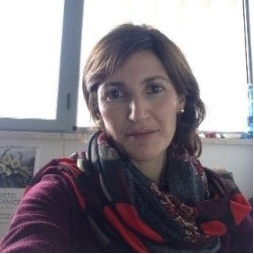Wave-Driven Processes in the Coastal Zones
A special issue of Water (ISSN 2073-4441). This special issue belongs to the section "Oceans and Coastal Zones".
Deadline for manuscript submissions: closed (30 June 2022) | Viewed by 8855
Special Issue Editors
Interests: wave–current interaction; wave structure interaction; sediment transport; coastal bedforms
Special Issues, Collections and Topics in MDPI journals
Special Issue Information
Dear Colleagues,
The processes occurring during wave propagation in the nearshore assume massive importance, since shorelines are exposed to several hazards as well as being highly densely populated. Storms, erosion and flooding can be mentioned as examples. Moreover, due to climate change, a significant increase in the risk related to such hazards is expected.
In this context, this Special Issue aims to collect recent advances in the research on hydrodynamic and morphodynamic processes occurring in the coastal zones. In particular, the purpose of this Special Issue is to publish original research articles that are focused on the development of methods for short- and long-term prediction of the wave impacts on structures and beaches.
Potential topics include, but are not limited to, the following aspects:
- Wave–structure interactions, including wave reflection, transmission and overtopping;
- Wave transformation;
- Wave-driven sediment transport and coastal bedforms;
- Effects of climate changes and mitigation measures on beaches;
- Numerical and physical models as well as field measurement in the coastal zone.
Prof. Dr. Carla Faraci
Dr. Claudio Iuppa
Guest Editors
Manuscript Submission Information
Manuscripts should be submitted online at www.mdpi.com by registering and logging in to this website. Once you are registered, click here to go to the submission form. Manuscripts can be submitted until the deadline. All submissions that pass pre-check are peer-reviewed. Accepted papers will be published continuously in the journal (as soon as accepted) and will be listed together on the special issue website. Research articles, review articles as well as short communications are invited. For planned papers, a title and short abstract (about 100 words) can be sent to the Editorial Office for announcement on this website.
Submitted manuscripts should not have been published previously, nor be under consideration for publication elsewhere (except conference proceedings papers). All manuscripts are thoroughly refereed through a single-blind peer-review process. A guide for authors and other relevant information for submission of manuscripts is available on the Instructions for Authors page. Water is an international peer-reviewed open access semimonthly journal published by MDPI.
Please visit the Instructions for Authors page before submitting a manuscript. The Article Processing Charge (APC) for publication in this open access journal is 2600 CHF (Swiss Francs). Submitted papers should be well formatted and use good English. Authors may use MDPI's English editing service prior to publication or during author revisions.
Keywords
- numerical model and physical model on hydrodynamic and morphodynamic processes
- wave process analysis on the basis field measurement
- effects of climate change on the coastal wave-driven processes
- coastal flooding
- prediction of wave loading, wave overtopping and wave run-up on coastal structures
- modelling wave–structure interactions
Benefits of Publishing in a Special Issue
- Ease of navigation: Grouping papers by topic helps scholars navigate broad scope journals more efficiently.
- Greater discoverability: Special Issues support the reach and impact of scientific research. Articles in Special Issues are more discoverable and cited more frequently.
- Expansion of research network: Special Issues facilitate connections among authors, fostering scientific collaborations.
- External promotion: Articles in Special Issues are often promoted through the journal's social media, increasing their visibility.
- e-Book format: Special Issues with more than 10 articles can be published as dedicated e-books, ensuring wide and rapid dissemination.
Further information on MDPI's Special Issue polices can be found here.






